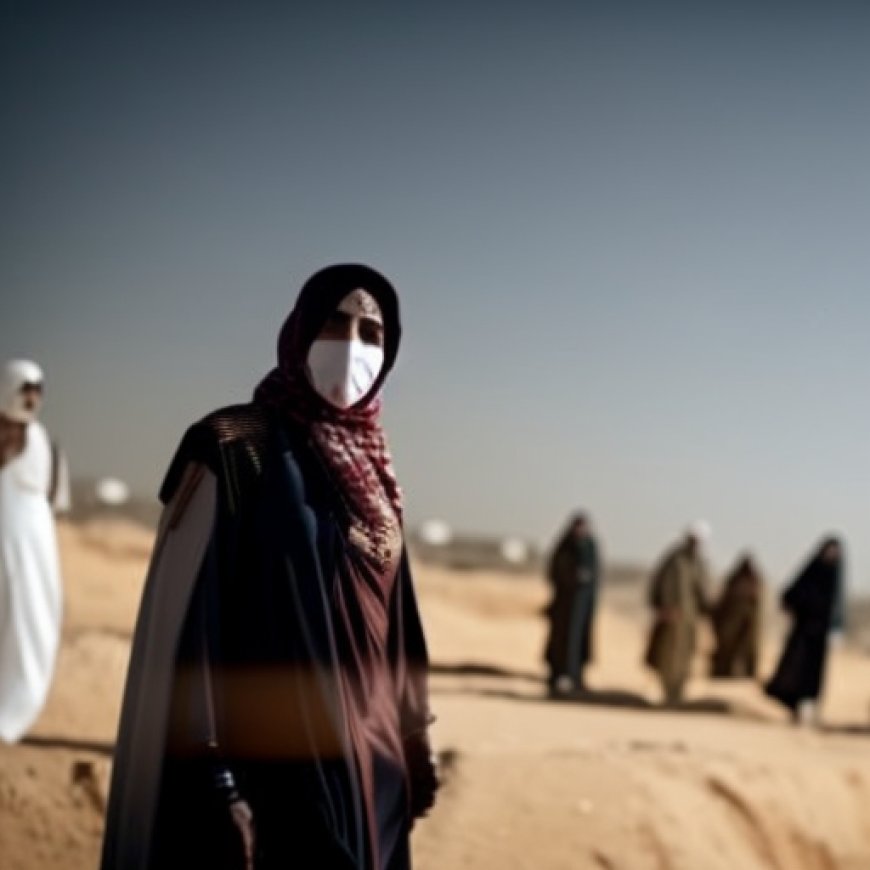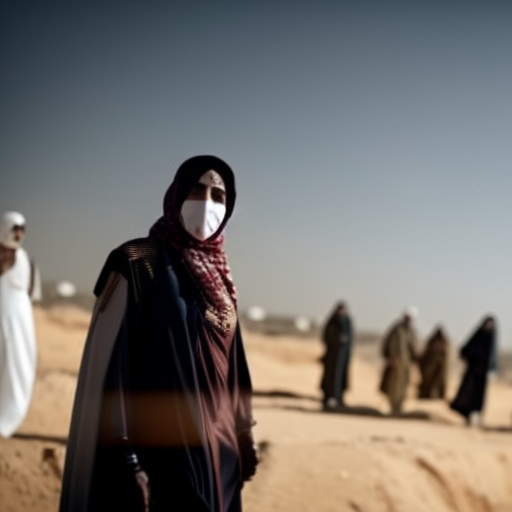How bad is the humanitarian crisis in Gaza? | Explained
How bad is the humanitarian crisis in Gaza | Explained The Hindu


The story so far:
As Israel’s war on Gaza is reaching its sixth month, the Palestinian enclave has become the world’s “largest open-air graveyard”, as the EU’s foreign policy chief Josep Borrell put it. The U.N. has warned that a famine in the tiny strip of land with 2.3 million people is “imminent”. Despite growing international calls for a ceasefire, the government of Prime Minister Benjamin Netanyahu vows that it would continue its military operation until “Hamas is dismantled”.
What is the situation in Gaza?
The war, which started after Hamas’s October 7, 2023 attacks in Israel in which at least 1,200 people were killed, has already destroyed much of Gaza and pushed most of the enclave’s population to the southern town of Rafah. According to Gaza’s health authorities, the over five months of Israeli attacks has killed at least 32,000 Palestinians, a vast majority of them women and children. More than 74,000 people have been injured. Gaza lacks enough hospitals, medical professionals, medicines, clean water and other healthcare facilities to treat the wounded. “We see patients trying to recover from life-saving surgeries and losses of limbs, or sick with cancer or diabetes, mothers who have just given birth, or newborn babies, all suffering from hunger and the diseases that stalk it,” the World Health Organization (WHO) said.
Why is there a severe hunger crisis?
The IPC report states that Gaza is now experiencing the most severe hunger crisis anywhere in the world. If before October 7, 0.8% of children under five were acutely malnourished, that figure went up to 12.4% to 16.5% in February. Gaza needs an immediate increase in supplies of food, water and other essential supplies, it said. Children are dying from the combined effects of malnutrition and disease. And the situation has gradually worsened over the past five months. If the percentage of Gaza’s population experiencing famine was roughly 30% in February, it went up to 50% by mid-March. In northern Gaza alone, at least 27 Palestinians, mostly children, have died due to malnutrition and dehydration, according to authorities. The north, where around 3,00,000 people are still living, has been mostly cut off from supplies as Israel has sealed off the border (except one checkpoint that was opened). Most of the aid that enters Gaza passes through two checkpoints in the south.
What led Gaza to the brink?
Before October 7, around 600 trucks entered Gaza daily, of which roughly 150 carried food. Since then, Gaza’s economy has been destroyed by the war. According to the U.N.’s Food and Agriculture Organization, half of croplands in the north, the breadbasket of the Strip, had been damaged in the war. Israel’s incessant bombing has also damaged Gaza city’s port, which practically destroyed the fishing sector, a major source of income for Gazans. Government institutions are not working and construction and other activities came to a grinding halt. This pushed almost all of the population to be dependent on aid, which means the demand for supplies went up many times. But the average number of trucks entering Gaza has come down from 600 in October to 200 today, according to the U.N., which accentuated the crisis that was already unfolding because of the destruction of Gaza’s economy. In February-end, Israel forces opened fire at a crowd that had gathered near an aid convoy, triggering a stampede and killing over 100 Palestinians.
Is there a solution in the offing?
Various U.N. agencies have made it clear that to quickly improve the situation, the war should be brought to an end. Gaza is going through its worst humanitarian tragedy. Its economy has been destroyed; population battered; aid supplies have fallen; and even the limited quantities of aid that reach the enclave are not being distributed properly because of hurdles that were created by ongoing fighting. The U.N., which also lost over 100 employees, is understaffed and U.N. workers are also starving.
SDGs, Targets, and Indicators
| SDGs | Targets | Indicators |
|---|---|---|
| SDG 2: Zero Hunger | Target 2.1: By 2030, end hunger and ensure access by all people, in particular the poor and people in vulnerable situations, including infants, to safe, nutritious and sufficient food all year round | Indicator not mentioned in the article |
| SDG 3: Good Health and Well-being | Target 3.8: Achieve universal health coverage, including financial risk protection, access to quality essential health-care services and access to safe, effective, quality and affordable essential medicines and vaccines for all | Indicator not mentioned in the article |
| SDG 6: Clean Water and Sanitation | Target 6.1: By 2030, achieve universal and equitable access to safe and affordable drinking water for all | Indicator not mentioned in the article |
| SDG 16: Peace, Justice, and Strong Institutions | Target 16.1: Significantly reduce all forms of violence and related death rates everywhere | Indicator not mentioned in the article |
1. Which SDGs are addressed or connected to the issues highlighted in the article?
SDG 2: Zero Hunger
The article highlights the severe hunger crisis in Gaza, with the UN warning of an imminent famine. This aligns with SDG 2, which aims to end hunger and ensure access to safe, nutritious, and sufficient food for all.
SDG 3: Good Health and Well-being
The article mentions the lack of healthcare facilities, clean water, and medical professionals in Gaza, leading to suffering and diseases among the population. This relates to SDG 3, which focuses on ensuring healthy lives and promoting well-being for all at all ages.
SDG 6: Clean Water and Sanitation
The article highlights the lack of clean water in Gaza, leading to poor sanitation and the spread of diseases. This connects to SDG 6, which aims to ensure availability and sustainable management of water and sanitation for all.
SDG 16: Peace, Justice, and Strong Institutions
The article discusses the ongoing war in Gaza and the need for a ceasefire to improve the humanitarian situation. This relates to SDG 16, which focuses on promoting peaceful and inclusive societies for sustainable development.
2. What specific targets under those SDGs can be identified based on the article’s content?
Target 2.1: By 2030, end hunger and ensure access by all people, in particular the poor and people in vulnerable situations, including infants, to safe, nutritious and sufficient food all year round
The article highlights the severe hunger crisis in Gaza, indicating a failure to achieve this target.
Target 3.8: Achieve universal health coverage, including financial risk protection, access to quality essential health-care services and access to safe, effective, quality and affordable essential medicines and vaccines for all
The article mentions the lack of healthcare facilities, medical professionals, and medicines in Gaza, indicating a failure to achieve universal health coverage.
Target 6.1: By 2030, achieve universal and equitable access to safe and affordable drinking water for all
The article highlights the lack of clean water and poor sanitation in Gaza, indicating a failure to achieve universal access to safe drinking water.
Target 16.1: Significantly reduce all forms of violence and related death rates everywhere
The article discusses the ongoing war in Gaza, indicating a failure to significantly reduce violence and related death rates.
3. Are there any indicators mentioned or implied in the article that can be used to measure progress towards the identified targets?
No, the article does not mention or imply any specific indicators that can be used to measure progress towards the identified targets.
SDGs, Targets, and Indicators
| SDGs | Targets | Indicators |
|---|---|---|
| SDG 2: Zero Hunger | Target 2.1: By 2030, end hunger and ensure access by all people, in particular the poor and people in vulnerable situations, including infants, to safe, nutritious and sufficient food all year round | Indicator not mentioned in the article |
| SDG 3: Good Health and Well-being | Target 3.8: Achieve universal health coverage, including financial risk protection, access to quality essential health-care services and access to safe, effective, quality and affordable essential medicines and vaccines for all | Indicator not mentioned in the article |
| SDG 6: Clean Water and Sanitation | Target 6.1: By 2030, achieve universal and equitable access to safe and affordable drinking water for all | Indicator not mentioned in the article |
| SDG 16: Peace, Justice, and Strong Institutions | Target 16.1: Significantly reduce all forms of violence and related death rates everywhere | Indicator not mentioned in the article |
Behold! This splendid article springs forth from the wellspring of knowledge, shaped by a wondrous proprietary AI technology that delved into a vast ocean of data, illuminating the path towards the Sustainable Development Goals. Remember that all rights are reserved by SDG Investors LLC, empowering us to champion progress together.
Source: thehindu.com

Join us, as fellow seekers of change, on a transformative journey at https://sdgtalks.ai/welcome, where you can become a member and actively contribute to shaping a brighter future.







